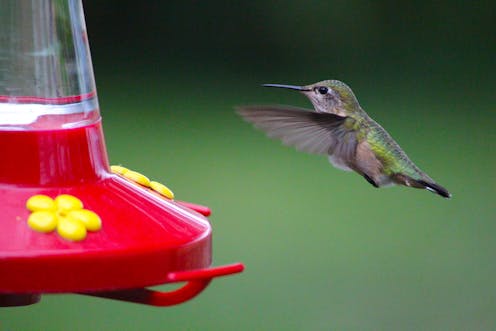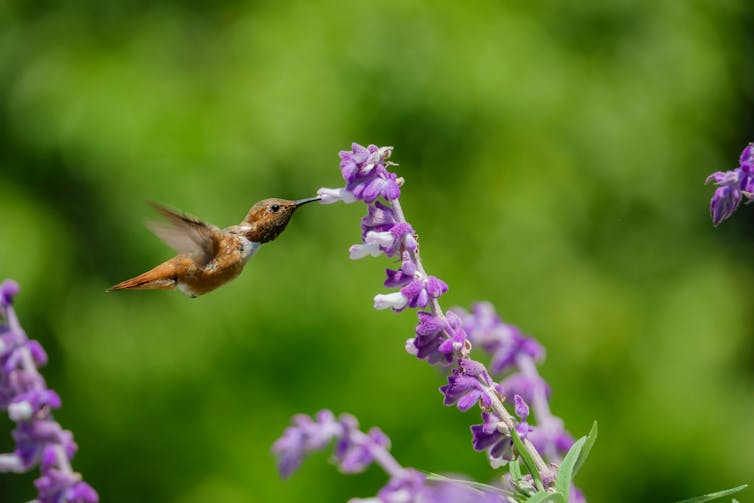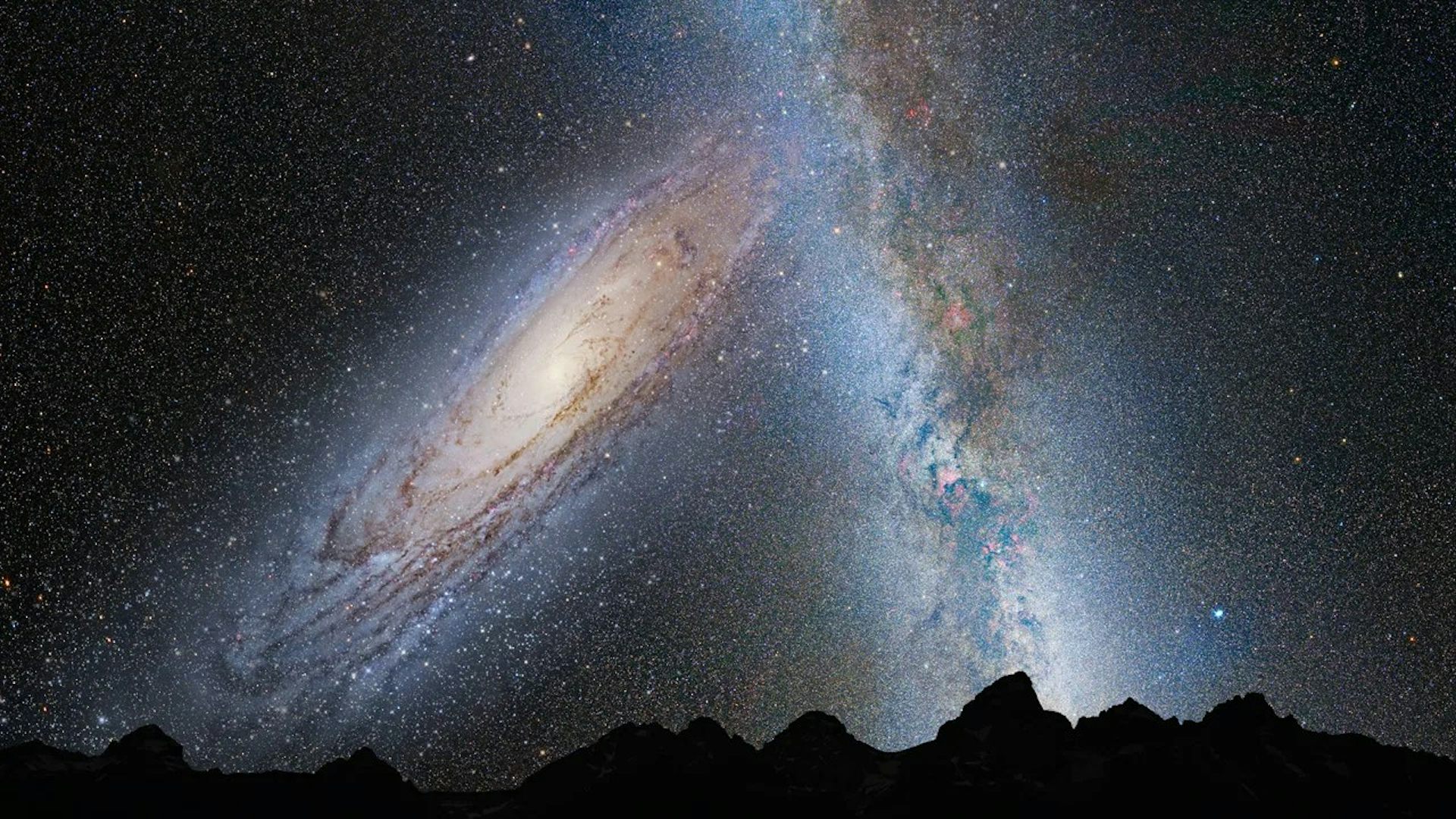Curious kids: Why don't hummingbirds get fat or sick from drinking sugary nectar?
How do hummingbirds drink sugary nectar and not get sick? Don't they need a balanced diet to stay healthy? Do they eat anything else?


Curious Kids is a series for children of all ages. If you have a question you’d like an expert to answer, send it to CuriousKidsUS@theconversation.com.
Why don’t hummingbirds get fat or sick from drinking sugary nectar? – Dhruv, age 15, Washington, District of Columbia
If you have a hummingbird feeder filled with sugar water, you might have the impression that all that hummingbirds need to live a healthy life is to sip sweet drinks all day long.
Believe it or not, these tiny birds need other types of fuel as well. While sugar makes up a large component of their diet, they also need proteins, fats, vitamins and minerals to be healthy. Their largest source of protein is from eating insects. If you watch hummingbirds near your feeders, you might get to see them do some erratic, zigzag flying – this is how they catch small insects flying through the air.
I’ve been studying hummingbirds for 10 years, and as part of my research, I place tiny aluminum bands on thousands of hummingbird legs to help me learn where they migrate and allow me to monitor how healthy their populations are each year.
What else do hummingbirds eat?
Hummingbirds will also pluck insects directly off of flowers, shrubs and trees. Some of their favorite bugs includes small flies and gnats, ants, tiny insect eggs, larva and even small spiders.
Some people report seeing hummingbirds eating dirt, sand and campfire ashes too. Ornithologists suspect this is to gain certain vitamins and minerals. They are also known to eat pollen and even tree sap. So a hummingbird diet is actually quite complex and varied, and they can’t eat sugar alone to survive.
When humans eat too much sugar consistently, their blood sugar levels rise and they are at risk of getting diabetes. Hummingbirds anatomy and digestion are very different from humans. While nectar accounts for about 90% of their diet, hummingbirds don’t get diabetes since their bodies are designed specifically for digesting sucrose. With a heartbeat that can reach 1,260 beats per minute, hummingbirds need the sugar rush.

How to attract and feed hummingbirds
Diluted white sugar most closely resembles the sucrose nectar of flowers the birds feed on. You can easily fill your feeders with sugar water. Mix four parts water to one part white sugar and then boil, cool and fill the feeder. Remember to clean and refill your feeder every few days, especially in hot weather. A dirty or moldy feeder can make hummingbirds sick.
Don’t ever use brown sugar, honey, or any other type of sweetener, which can harm a hummingbird. For example, brown sugar has too much iron in it. Try not to make it too much sweeter than a 4:1 ratio because it is harder for them to digest. There is such a thing as too sweet, even for a hummingbird.
Did you know that hummingbirds probably don’t want red dye added to their sugar water? Red dye serves no healthy purpose for their body (or yours). Most red dyes are petroleum-based, and it makes their poop red, which is unnatural.
The red color on your feeder is enough for a hummingbird to find it. Or consider planting some red or purple flowers in your garden, like Salvias or Monardas – hummingbirds love them and they’re great sources of insects too.
So don’t be shocked if a hummingbird zips past you feeder and ignores a fresh batch of sugar water. It might be focused on getting its protein fix and catching a flying gnat right out of the air.
Hello, curious kids! Do you have a question you’d like an expert to answer? Ask an adult to send your question to curiouskidsus@theconversation.com.
Please tell us your name, age and the city where you live. We won’t be able to answer every question, but we will do our best.
Jessica Pollock receives IBO research funding from a variety of sources, including but not limited to, the US Forest Service, the US Bureau of Land Management, and the Idaho Department of Fish and Game.
Read These Next
The ChatGPT effect: In 3 years the AI chatbot has changed the way people look things up
ChatGPT has dramatically altered how people retrieve information, muscling aside Google search as the…
When darkness shines: How dark stars could illuminate the early universe
Some unique ‘stars’ might be fueled by dark matter annihilation.
A quarter of early child care educators in Colorado reported mistreatment from co-workers
Younger and more diverse teachers reported higher rates of bullying and discrimination by their colleagues.…





